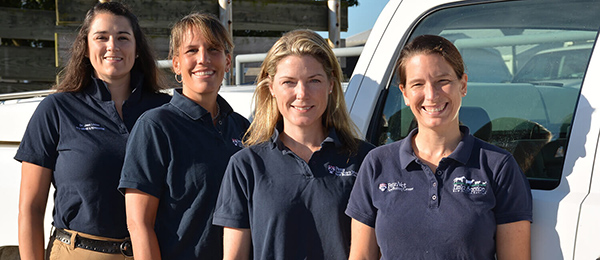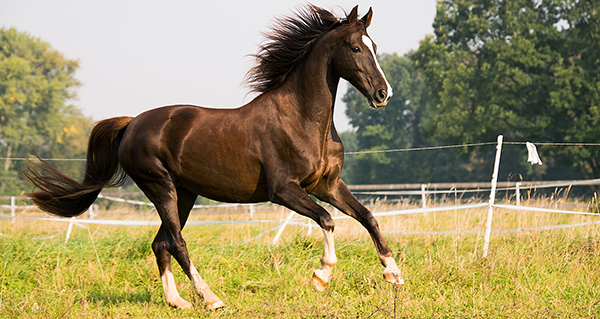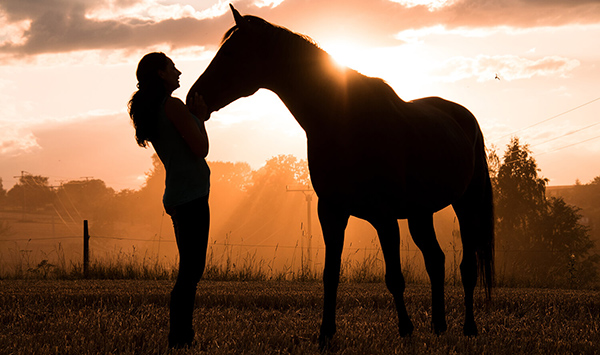What’s Age Got to Do with It? Caring for Geriatric Horses
By: Sacha Adorno
The idea that age is but a number is as true for animals as it is for humans. Horses, especially ponies, are routinely living to the mid-twenties and even thirties. Often, the equines still enjoy life, work, or performing into their third decade.
“We shouldn’t use one age to classify a horse as geriatric,” said Dr. Elizabeth Arbittier, Assistant Professor in Equine Field Service at New Bolton Center. “Horses, like humans, are individuals. They show signs of aging at different rates. Sometimes, I’ll see a horse at 15 and see the animal again at 17 and am shocked at how much he or she has clinically aged. Other horses are 25 years old, and you’d never know they’re a day over 12!”
One key to keeping horses healthier longer is regular preventative care visits. Arbittier recommends horses in the mid-teen years see a veterinarian twice a year and have annual bloodwork to test for diseases that start popping up around this time.
“Since we don’t see our regular patients daily, potential problems may be more obvious to us than to our clients,” explained Arbittier. “We’ll catch things during a physical exam that may go otherwise unnoticed due to their gradual onset.”
Arbittier and her Field Service colleagues provide wellness care to horses on the farm.

New Bolton Center’s Equine Field Service Team: Drs. Jenn Linton, Liz Arbittier, Meagan Smith, and Ashley Boyle.
“New Bolton’s Center Wellness Program offers two options—basic care and advanced care with senior and dental add-on options,” she said. “We enable owners to pick a program that most suits their animals. They receive significant savings on services, such as physical exams, vaccines, Coggins tests, bloodwork, senior specific bloodwork, dental work, fecal exams, brief lameness exams, and body condition scoring. We can identify conditions and decide if we need to investigate further.”
No Change too Small
Some of the more common age-related conditions or diseases Arbittier finds in her aging patients are Equine Pituitary Pars Intermedia Dysfunction (PPID), also known as Cushings Disease, and Equine Metabolic Syndrome (EMS) or Insulin Dysfunction. Dental issues, nutritional deficits, osteoarthritis, ocular changes, and airway problems like Equine Asthma also appear frequently as horses get older. “Often, patients have comorbidities or multiple related issues, requiring specialized care,” she said.
Beyond getting regular preventative care checkups, Arbittier encourages owners and caretakers to call their veterinarian to report any changes in behavior, even when it seems minor or unimportant.
“No detail is too small if it’s new or a change from the norm,” she said. “One reason that a lot of disease processes are missed early on, when they’re more easily treated, is they tend to create slow and insidious changes.”
Among shifts to look for are drinking and urinating more often than normal, reluctance to walk or move forward, dropping feed while eating, weight loss or gain, shaggy or non-shedding haircoat, lethargy, coughing, or a sudden drop in the pasture social food-chain—”If the horse was always alpha boss and suddenly becomes the one who is always bullied, something may be going on with him or her,” Arbittier explained.
The most important part of safe aging is to catch problems before they advance too far. “Every horse will develop issues as it ages,” said Arbittier. “But the sooner we identify an issue the more likely we’ll be able to keep it from having catastrophic implications.”
 What to Watch for In Aging Horses
What to Watch for In Aging Horses
Below are diseases or disorders common to aging horses, as well as signs to watch for. This content is not diagnostic or a substitute for medical advice. If your horse exhibits any of these symptoms, please contact your veterinarian or New Bolton Center.
Equine Pituitary Pars Intermedia Dysfunction (PPID), also known as Cushings Disease: A shaggy, non-shedding hair coat that’s thicker earlier in the season than usual, increased drinking and urination, loss of muscle/topline, potbelly, persistent skin infections, frequent hoof abscesses, inappropriate fat pads, laminitis, multiple soft tissue injuries
Equine Metabolic Syndrome: Obesity, weight gain, or inability to lose weight (although some horses with insulin dysfunction will be thin), cresty neck, inappropriate fat pads, laminitis (which can be very slow and insidious and go unnoticed)
Dental problems: Dropping food both hay and grain, inability to gain weight
Nutritional deficit: Loss of musculature, loss of topline, “horse looks old”
Osteoarthritis: Lameness, stiffness, decrease in quality of performance or unable to perform as normal
Ocular Changes: Tearing (even mild), eye cloudiness (even mild), swelling of the lids (even mild), difficulty with going from bright to dark areas, inability to negotiate obstacles normally, seems tentative in situations where previously confident











